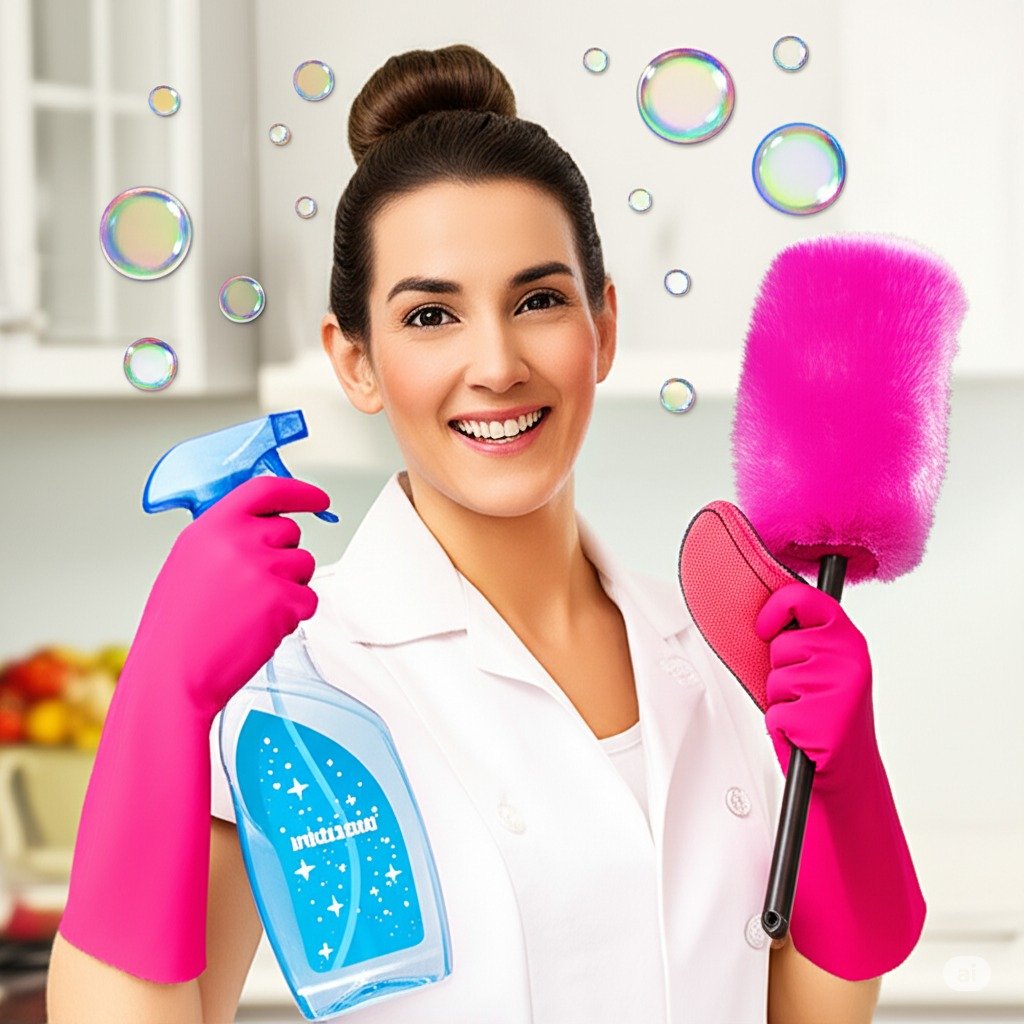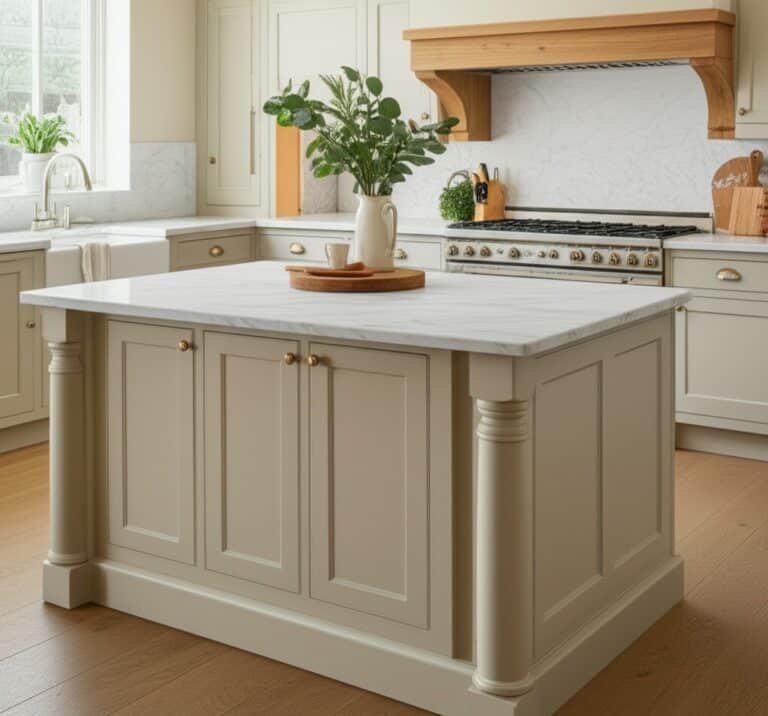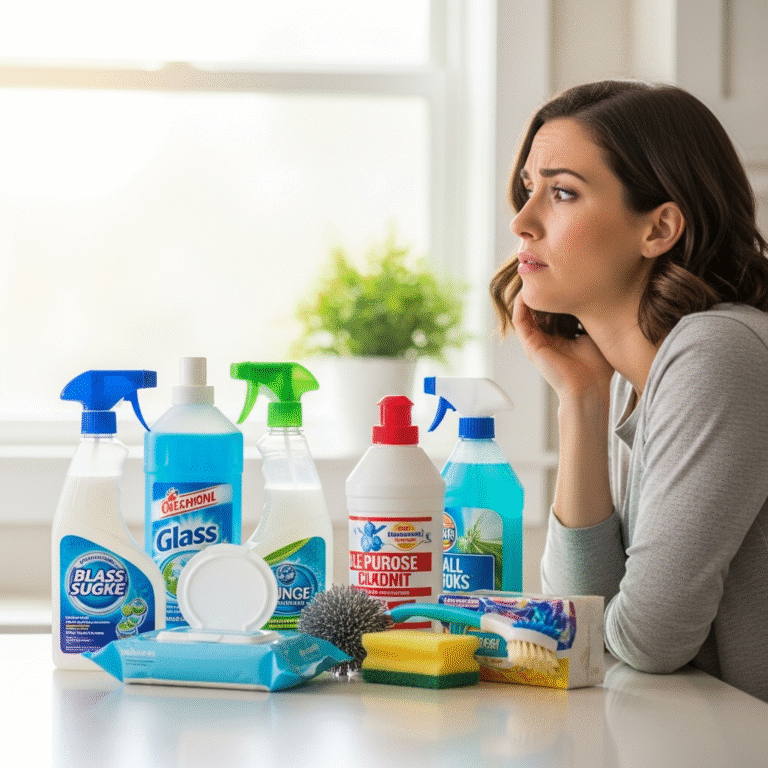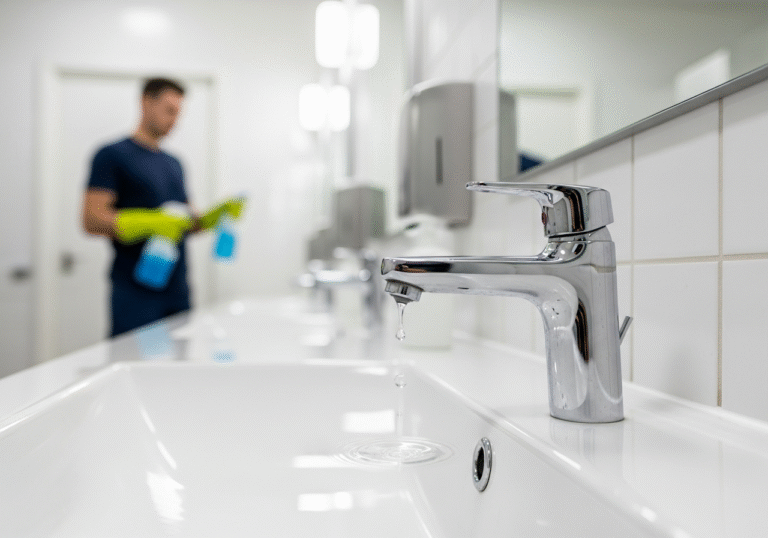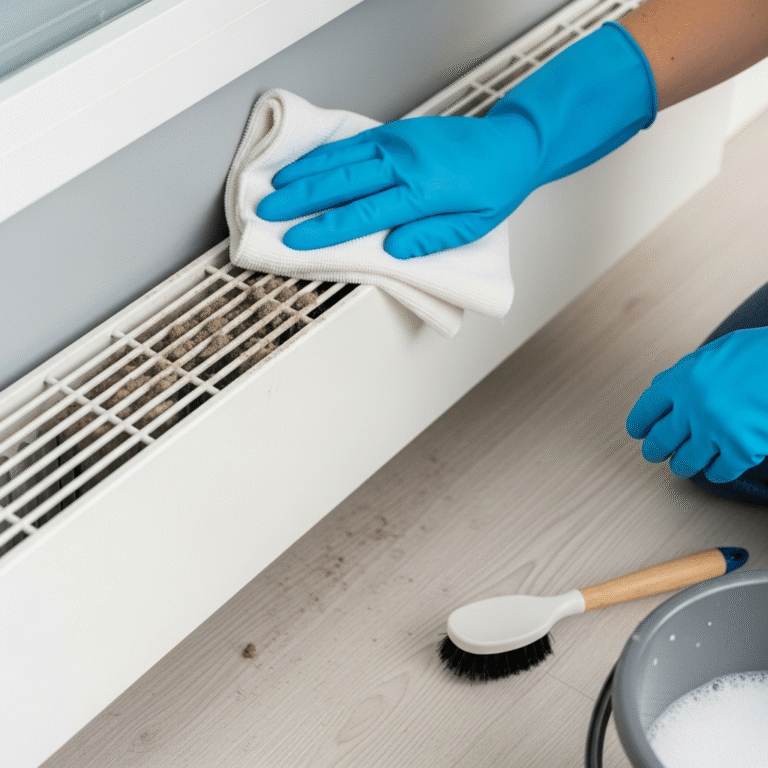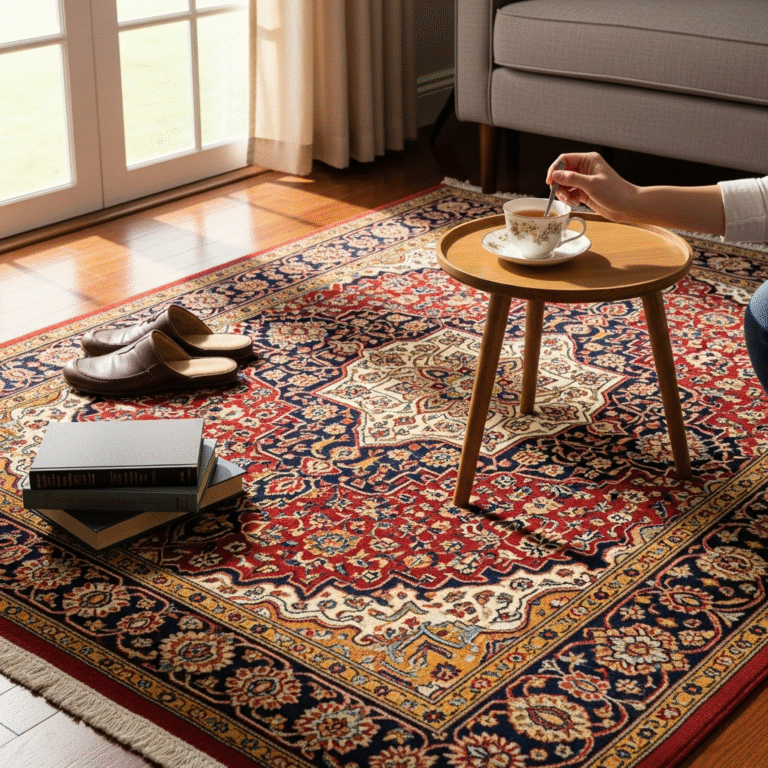Keeping a kitchen island clean and looking its best requires understanding its various surfaces and the materials that are best suited to each. Often the center of culinary activities and social gatherings, kitchen islands can be constructed from a variety of materials, each with specific cleaning requirements.
1.Granite
For kitchen islands topped with granite, a natural stone known for its durability and unique patterns, daily cleaning should involve a pH-neutral cleaner formulated specifically for stone, or a mild solution of dish soap and warm water. Application with a soft microfiber cloth is ideal, followed by thorough rinsing and drying to prevent water spots and film buildup on your kitchen island. Abrasive cleaners, scouring powders, and acidic substances such as vinegar or lemon juice should be avoided, as they can erode the surface or dull the polish over time. Granite countertops are porous and are typically sealed after installation. This sealant wears away with use and requires reapplication, usually annually or semi-annually, depending on use. Sealant integrity testing can be done by looking for water droplets on the surface; if water seeps through, it’s time to reseal. To remove stains from granite, special poultices are effective. Oil-based stains on your kitchen island can usually be removed with a paste of baking soda and water, left to sit for several hours or overnight before gently wiping away. Organic stains, such as coffee or wine stains, may respond well to a poultice made with hydrogen peroxide and flour. Always test stain removal methods on an inconspicuous area first.
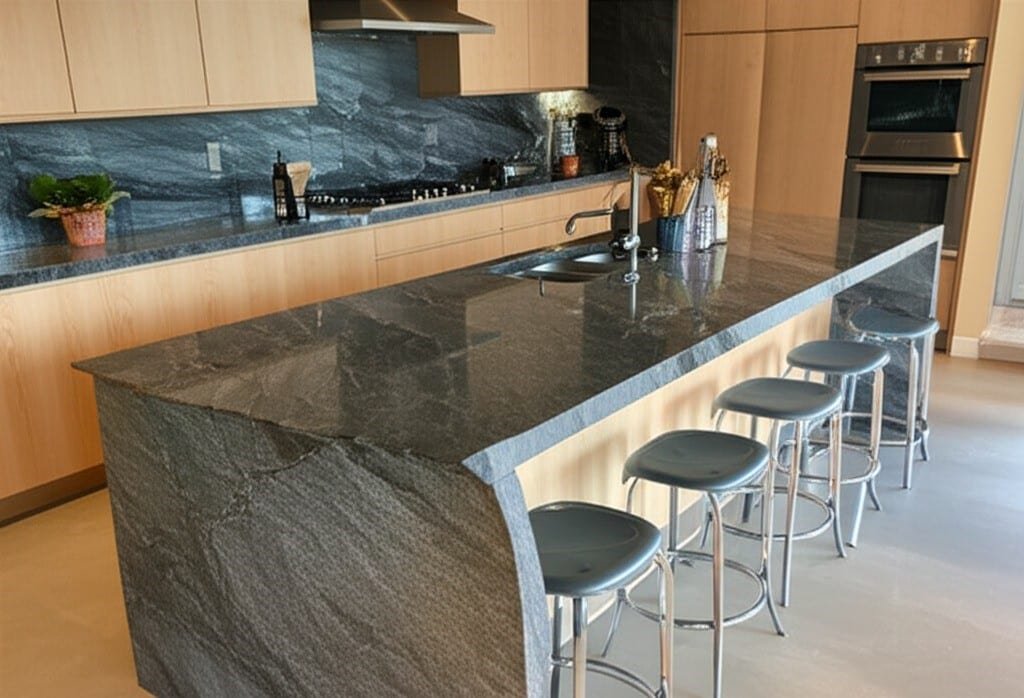
2. Quartz
Kitchen islands with quartz countertops, a man-made stone product, are praised for their nonporous nature and high resistance to stains and scratches. Daily cleaning is simple: a soft cloth or sponge with warm water and a mild detergent is usually sufficient. Unlike granite, quartz does not require sealing. However, it is important to avoid harsh chemicals, such as bleach or oven cleaners, and abrasive pads, which can dull the surface or cause fine scratches. Although highly stain-resistant, immediate cleaning of spills such as wine, coffee or paint is still recommended. For dried-on residue on your kitchen island, a plastic spatula can be used gently, followed by wiping with a non-abrasive cleaner designed for quartz or a glass cleaner. Direct heat can damage quartz, so using hot pads or sponges under hot pans is essential.
3.Marble
Marble kitchen islands, another natural stone, bring elegance to an island, but are considerably more delicate than granite or quartz. Their soft, porous nature makes them highly susceptible to stains, etching, and scratches. Only pH-neutral cleaners should be used on marble. Even mildly acidic substances, including common foods such as citrus juice, vinegar, or tomatoes, can erode the surface, leaving dull stains. Cleaning a marble kitchen island involves wiping with a soft cloth, a pH-neutral cleaner, and thorough rinsing and drying. Marble countertops should be sealed regularly, often more frequently than granite, to protect against stains. Spills should be wiped up immediately. For stains, there are specialized marble powders available, or one can be made with baking soda and water for oil-based stains, or hydrogen peroxide for organic stains, similar to granite but with even more care. Abrasive cleaners and scrubbing will scratch marble. Polished marble may require professional repolishing over time to restore its shine.
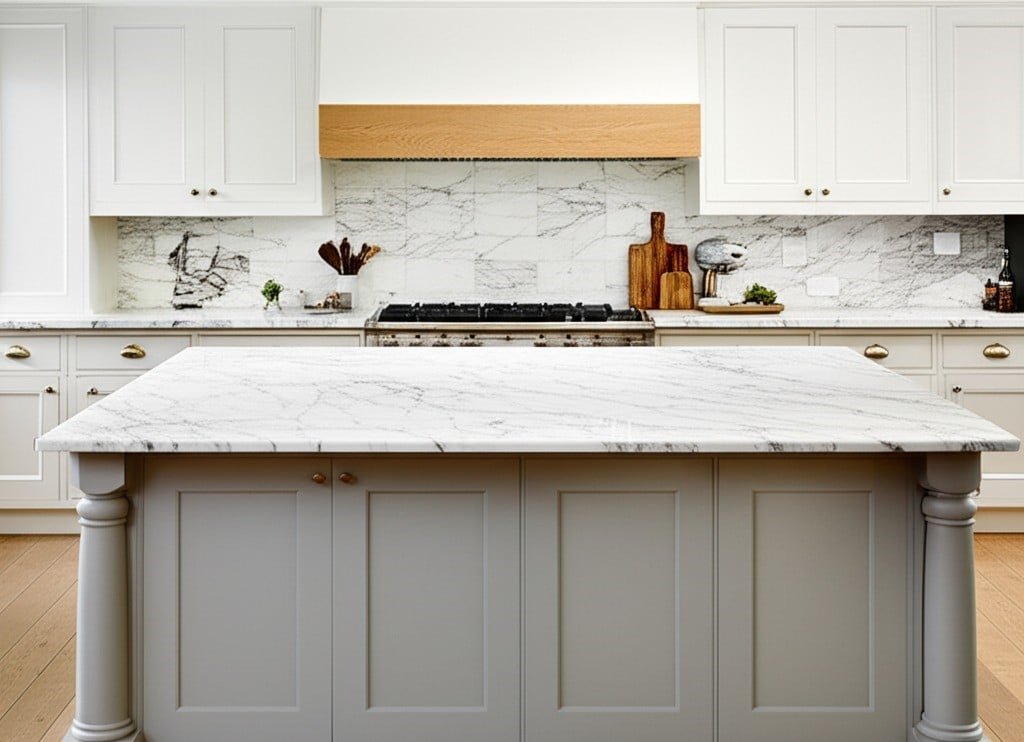
4.Laminate
Laminate countertops are an economical option, offering a wide variety of designs. Cleaning laminate is generally easy, requiring only a soft cloth or sponge with mild soap and water or a non-abrasive all-purpose cleaner. It is crucial to avoid excessive amounts of water, especially near seams, as water can seep underneath and cause the substrate to swell or the laminate to delaminate. Abrasive cleaners, steel wool, or scouring pads will scratch the surface. For stubborn stains, a paste of baking soda and water can be gently applied, or a solvent such as denatured alcohol can be used sparingly for ink or dye stains, followed by a thorough rinse. Some laminate finishes may benefit from a specialized laminate polish to enhance the shine and provide a protective layer on your kitchen island.
5.Wood
For kitchen islands with wood countertops or butcher block countertops, care routines depend on the finish. Sealed wood surfaces can be cleaned with a damp cloth and mild detergent and then dried thoroughly. Unsealed or oil-finished butcher blocks, often used for food preparation, require more specific care. Daily cleaning involves scraping off food debris, washing with hot water and mild detergent, and then immediately and thoroughly drying. To sanitize, a solution of white vinegar and water (usually in a 1:1 ratio) can be sprayed on, left for a few minutes, then wiped and dried. Food-grade mineral oil or a specialized butcher block conditioner (usually a mixture of mineral oil and beeswax) should be applied regularly, monthly or when the wood feels dry, to keep the wood moisturized, prevent cracking, and maintain its water resistance. This oiling process involves applying a generous layer, letting it soak in for several hours or overnight, and then wiping off the excess. Deep stains or burn marks may require sanding and re-oiling your kitchen island. Avoid letting water sit on the surface for long periods of time.

6.Stainless
Stainless steel kitchen islands add a professional look to your kitchen and are known for being hygienic and heat-resistant. However, they can show fingerprints, water spots, and scratches. For daily cleaning, a soft cloth or sponge with mild detergent and warm water is effective. Always wipe in the direction of the wood grain. Rinse thoroughly and dry with a clean microfiber cloth to avoid water spots and streaks. Specialized stainless steel cleaners can enhance the shine and remove fingerprints from your kitchen island. For tougher dirt or sticky residue, a paste of baking soda and water can be gently rubbed in the direction of the wood grain. Avoid abrasive cleaners, steel wool, or scrubbing against the grain of the wood, as these will scratch the surface. Some find that a very light application of mineral oil or olive oil, well-buffed, can help resist fingerprints and add shine.
7. Concrete
Concrete countertops offer a chic industrial look and are highly durable when properly sealed. Cleaning involves using mild, non-abrasive cleaners and a soft cloth. Because concrete is porous, sealing is essential to prevent stains and damage from acidic substances. Depending on the sealant used, re-sealing may be necessary every one to three years. Waxing can provide an additional protective layer and enhance the shine of your kitchen island. Avoid acidic cleaners, such as vinegar or lemon juice, and harsh chemical solvents, which can corrode or degrade the sealant. Stains should be treated immediately. For sealed concrete, most spills can be easily removed. If a stain has set in, the approach will depend on the type of stain and the sealant used; consulting your installer or manufacturer for specific advice is usually the best option.

In addition to the countertop, the island base, often made up of cabinets, requires its own set of supplies. Wood cabinets benefit from a mild wood cleaner or a mild soap and water solution applied with a microfiber cloth, moving in the direction of the wood grain, and then drying. Painted cabinets should be cleaned with a soft cloth and a very mild detergent solution to prevent chipping or fading of the paint. Laminate cabinet surfaces can be cleaned in a similar manner to laminate countertops. Hardware, such as pulls and knobs, can be cleaned with an all-purpose cleaner or a cleaner specifically designed for the type of metal, making sure they are dry to avoid water spots on your kitchen island.
If your kitchen island incorporates a sink, the material of the sink will determine the cleaning products you use. Stainless steel sinks can be cleaned with baking soda scrubbing paste, Bar Keepers Friend for tough stains and shine, or specialty stainless steel sink cleaners. Always rinse thoroughly. Porcelain sinks respond well to non-abrasive powders like Bon Ami or baking soda paste. Avoid chlorine bleach in high concentrations or if left on for too long, as it can damage the enamel on your kitchen island over time. Composite granite sinks usually have manufacturer-recommended cleaners, but generally, mild dish soap and water or a 50/50 vinegar and water solution for hard water stains (rinsed thoroughly) work well. Faucets, whether chrome, brushed nickel, or stainless steel, should be cleaned with mild soap and water or a specialty faucet cleaner and then dried to prevent water spots. For mineral buildup, a cloth soaked in white vinegar can be wrapped around the affected area for a short period, followed by rinsing.
For kitchen islands equipped with a cooktop, specific materials are required. Ceramic or glass cooktops require a cleaner specifically designed for ceramic cooktops, applied after the surface has cooled. A scraper designed for ceramic cooktops can be used to gently remove burnt-on food. Avoid abrasive sponges. Gas cooktops require cleaning of the grates (usually cast iron or enameled, which can be soaked in hot soapy water or a degreasing solution), the burner caps, and the cooktop surface itself, which can be stainless steel or enameled. Degreasers are particularly useful in this case.
Ventilation hoods, if positioned above a kitchen island cooktop, also need regular cleaning, especially their filters. Wire mesh filters can usually be washed in hot, soapy water or in the dishwasher. Charcoal filters are usually not washable and need to be replaced periodically. The surface of the hood, usually stainless steel, can be cleaned with stainless steel-safe cleaners or degreasers.
The area around the base of the kitchen island and any built-in seating, such as bar stools, also collects dirt. The base of the island may need to be cleaned to remove scratches or spills. The upholstery of the stools may need fabric cleaners or leather conditioners, while the frames may need wood polish or metal cleaners.
A collection of general cleaning tools is indispensable for island maintenance. High-quality microfiber cloths are essential, as they clean effectively without scratching and can be used for various tasks from dusting to polishing. Have several on hand for different surfaces and purposes. Non-scratch sponges and scrub brushes of varying stiffness are useful for different cleaning intensities. Spray bottles are practical for diluting concentrated cleaners or for applying DIY solutions. A small squeegee can be useful for achieving a streak-free finish on very smooth or glass island tops. Durable cleaning gloves protect hands from cleaning agents and hot water. While paper towels are convenient for quick spill absorption, reusable cloths are more economical and environmentally friendly for general cleaning. A vacuum cleaner with a crevice tool and brush attachment is helpful for cleaning crumbs from around the edges of built-in cooktops or sinks, and for cleaning inside island drawers and shelves.
Specialized cleaning products further aid in island upkeep. A good quality degreaser is invaluable, especially if the island is used heavily for cooking or has an integrated cooktop. Food-safe disinfectants are important for surfaces where food is prepared, ensuring they are free from harmful bacteria. Polishes specific to stone, wood, or stainless steel can restore luster and provide a protective layer. Stain removers, formulated for particular surfaces and types of stains, can be lifesavers. As mentioned, sealants are crucial for porous materials like granite, marble, wood, and concrete, protecting them from moisture and staining.
For those inclined towards DIY solutions, some common household items can be effective when used correctly and with caution. A diluted white vinegar solution is a good disinfectant and can cut through grease, but it must be avoided on natural stone like marble or granite and used sparingly on sealed wood. Baking soda makes a gentle abrasive paste for scrubbing sinks or lifting certain stains. Lemon juice also has cleaning properties but is acidic and should be avoided on sensitive stone surfaces. When using any DIY solution, always test in an inconspicuous area first and understand the potential impact on the specific material of your island.
The diverse materials and multifaceted uses of a kitchen island mean that a comprehensive yet specific range of cleaning supplies is necessary to maintain its beauty and functionality effectively. Each surface, from the expanse of the countertop to the details of fixtures and cabinetry, demands tailored care.
For thorough cleaning of every surface in your home, including challenging kitchen islands with their diverse materials from granite and marble to wood and stainless steel, consider Toronto Shine Cleaning. We provide expert care for all your cleaning needs, ensuring your island and entire home sparkle with a pristine finish.
